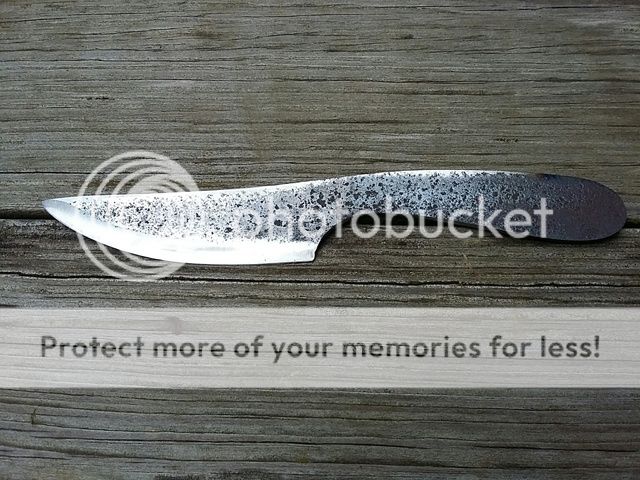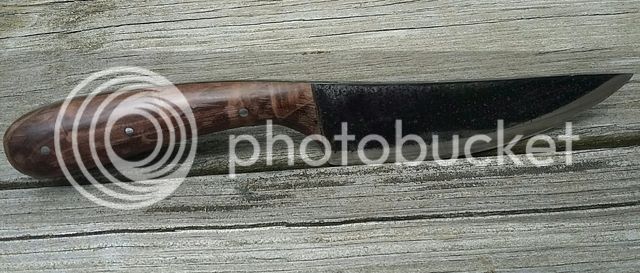-
This community needs YOUR help today. We rely 100% on Supporting Memberships to fund our efforts. With the ever increasing fees of everything, we need help. We need more Supporting Members, today. Please invest back into this community. I will ship a few decals too in addition to all the account perks you get.

Sign up here: https://www.muzzleloadingforum.com/account/upgrades -
Friends, our 2nd Amendment rights are always under attack and the NRA has been a constant for decades in helping fight that fight.
We have partnered with the NRA to offer you a discount on membership and Muzzleloading Forum gets a small percentage too of each membership, so you are supporting both the NRA and us.
Use this link to sign up please; https://membership.nra.org/recruiters/join/XR045103
You are using an out of date browser. It may not display this or other websites correctly.
You should upgrade or use an alternative browser.
You should upgrade or use an alternative browser.
Courier du Bois
- Thread starter Bagman
- Start date

Help Support Muzzleloading Forum:
This site may earn a commission from merchant affiliate
links, including eBay, Amazon, and others.
Looks nice,
Runner of the woods?
Runner of the woods?
- Joined
- Jan 3, 2013
- Messages
- 20,091
- Reaction score
- 1,018
Looks like it was laser or water jet cut out of a an old rusty piece of flat stock and then wire brushed....Not trying to be critical, just calling it like I see it....The steel has a very modern look to it (meaning not hand forged)
Are you planning to put a handle on it?
Are you planning to put a handle on it?
One of my favorite designs :thumbsup:
- Joined
- Jun 12, 2005
- Messages
- 7,968
- Reaction score
- 961
i like it - great character to the shape and finish.
It is a modern design. Nothing wrong with that as long as no one is claiming otherwise.
The shape looks fine from a functional perspective. I would suggest, if you are actually going to be running through the woods with it, that you give some serious consideration to polishing out all those pits on the blade. If you leave them on, they will tend to collect blood and dirt and make the blade difficult to clean, leading to a greater chance of corrosion on the knife and infection (via cuts or food) for yourself.
Same as with forge marks and remnant file teeth - they look cool and "old timey" to modern eyes, but they decrease the functionality of the knife and, in the case of forge marks at least, would be considered a sign of slovenly work back in the day.
The shape looks fine from a functional perspective. I would suggest, if you are actually going to be running through the woods with it, that you give some serious consideration to polishing out all those pits on the blade. If you leave them on, they will tend to collect blood and dirt and make the blade difficult to clean, leading to a greater chance of corrosion on the knife and infection (via cuts or food) for yourself.
Same as with forge marks and remnant file teeth - they look cool and "old timey" to modern eyes, but they decrease the functionality of the knife and, in the case of forge marks at least, would be considered a sign of slovenly work back in the day.
Are you trying to make traditional designs?Bagman said:Did a bit of research and really can't find any original knives that look like this. Lots of modern ones.
Black Hand
Cannon
- Joined
- Mar 17, 2005
- Messages
- 9,348
- Reaction score
- 893
Might be due to the fact that it is a modern design. The closest period blade to that shape I can recall is a cartouche knife https://www.bing.com/images/search...rtouche+knife&qpvt=cartouche+knife&FORM=IGRE, but even they are very different.Bagman said:Did a bit of research and really can't find any original knives that look like this.
Please take this as a creative suggestion - don't use the TOW or any other catalog from a vendor as a reference for knife blade shapes. They sell people stuff and much of it is created from someones imagination. There are so many existing period blades to see...
Last edited by a moderator:
- Joined
- Jan 3, 2013
- Messages
- 20,091
- Reaction score
- 1,018
Maybe this will help...
http://www.google.se/url?sa=t&rct=j&q=&esrc=s&source=web&cd=4&ved=0ahUKEwiG68GXm9nUAhVMb5oKHdu7BY4QFgg-MAM&url=http%3A%2F%2Fwww.ontarioarchaeology.on.ca%2FResources%2FPublications%2Foa13-1-garrad.pdf&usg=AFQjCNEeAu9VATKNSUc_u9hvp9rIv6jncA
http://www.google.se/url?sa=t&rct=j&q=&esrc=s&source=web&cd=4&ved=0ahUKEwiG68GXm9nUAhVMb5oKHdu7BY4QFgg-MAM&url=http%3A%2F%2Fwww.ontarioarchaeology.on.ca%2FResources%2FPublications%2Foa13-1-garrad.pdf&usg=AFQjCNEeAu9VATKNSUc_u9hvp9rIv6jncA
Please don't take this the wrong way, but if one wants to make an historical copy, perhaps finding a reference first would be wise?Bagman said:I was... but it became apparent that this is a modern design. I will still finish it...but call it a bushcraft knife.
Bagman,
If you are interested in recreating 18th and 19th century handmade knives, you should really have a look at Gordon Minnis's American Primitive Knives: 1770-1870. You can get it via interlibrary loan as well as buying it outright. It is 34 years old and is outdated in some respects, but still the best book on the subject that I am aware of.
The other two books to look for are Neumann's Swords and Blades of the American Revolution, and Hamilton Grant's The Knife in Homespun America. Grant's is the more useful of the two, IMHO, but take his dates with a big grain of salt. I personally don't trust much that Neumann writes on homespun knives (swords, daggers, etc, yes, knives no) but he's worth being aware of.
It might also be worth forging out a knife without a particular pattern in mind, especially if you do so from a bar of steel instead of flat stock. You will soon realize why so many primitive knives have that sort of lumpy quality - "shapelessness" as Minnis calls it - it is the way a quickly forged knife naturally looks, without a whole lot of grinding to alter the shape. It will help show you what to look for on an old knife.
If you are interested in recreating 18th and 19th century handmade knives, you should really have a look at Gordon Minnis's American Primitive Knives: 1770-1870. You can get it via interlibrary loan as well as buying it outright. It is 34 years old and is outdated in some respects, but still the best book on the subject that I am aware of.
The other two books to look for are Neumann's Swords and Blades of the American Revolution, and Hamilton Grant's The Knife in Homespun America. Grant's is the more useful of the two, IMHO, but take his dates with a big grain of salt. I personally don't trust much that Neumann writes on homespun knives (swords, daggers, etc, yes, knives no) but he's worth being aware of.
It might also be worth forging out a knife without a particular pattern in mind, especially if you do so from a bar of steel instead of flat stock. You will soon realize why so many primitive knives have that sort of lumpy quality - "shapelessness" as Minnis calls it - it is the way a quickly forged knife naturally looks, without a whole lot of grinding to alter the shape. It will help show you what to look for on an old knife.
Black Hand
Cannon
- Joined
- Mar 17, 2005
- Messages
- 9,348
- Reaction score
- 893
Beware that the pointed forward end of the handle slab by the choil is a weak point and may break (cross-grain).Bagman said:
Similar threads
- Replies
- 4
- Views
- 495
- Replies
- 18
- Views
- 1K






